本帖最后由 question 于 2021-6-22 20:27 编辑
闲着没事搞个键盘玩玩,上正片哈哈。
打开立创eda,点下这个 点下那个就这样了。
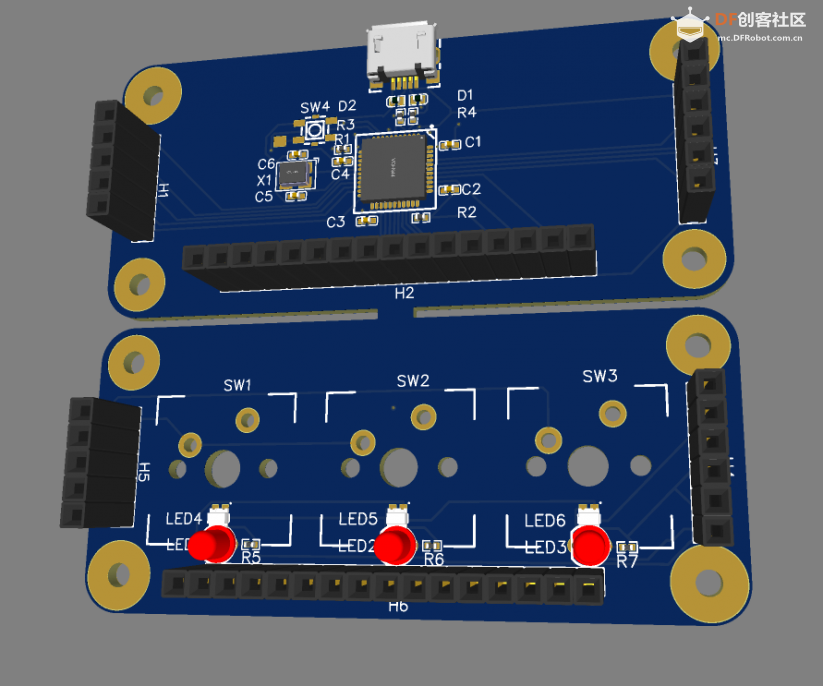
立创直接打板
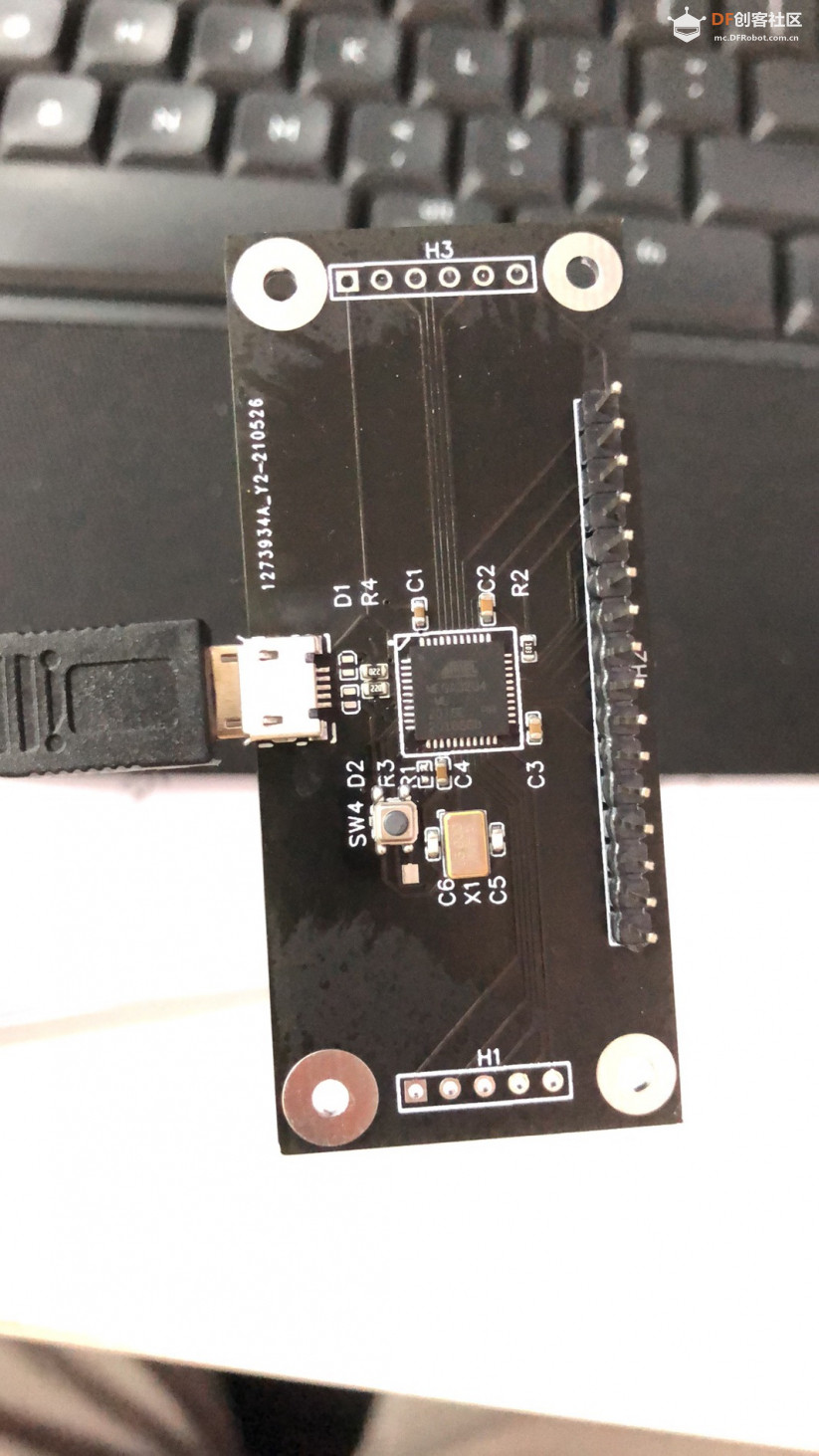
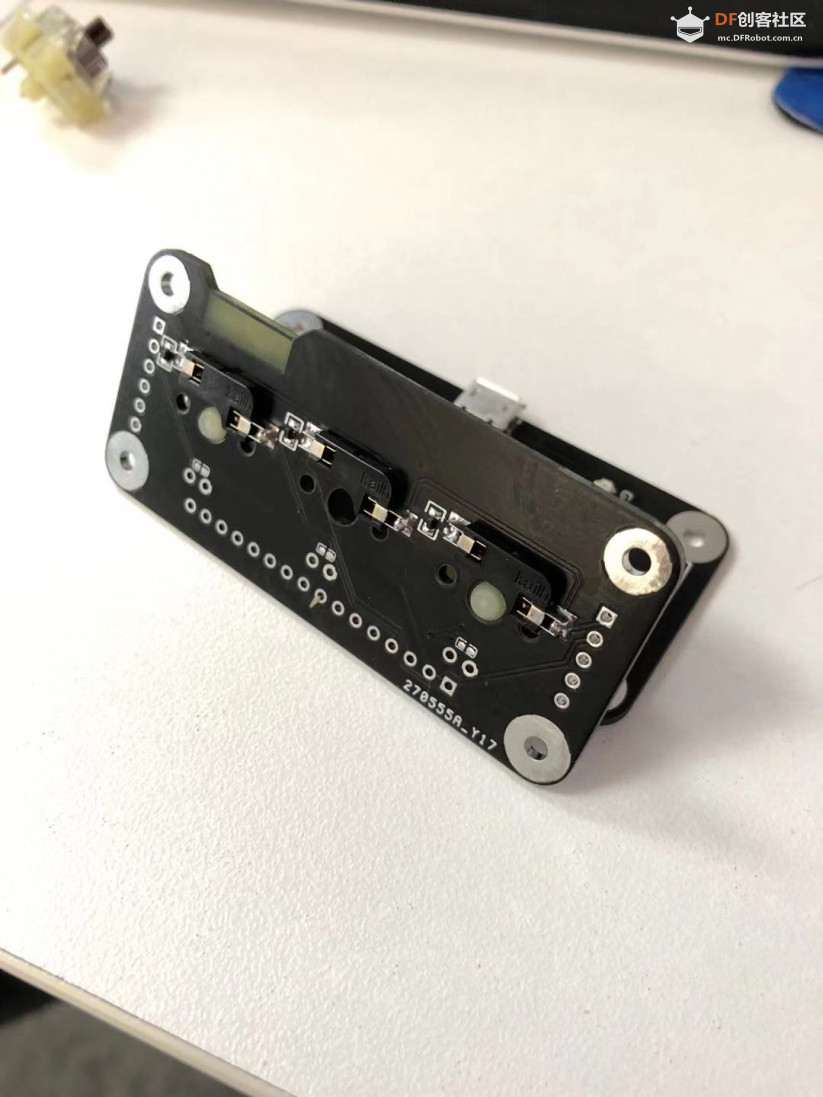
rgb灯 热插拔轴,玩得有点hi
rgb测试代码
- // NeoPixel test program showing use of the WHITE channel for RGBW
- // pixels only (won't look correct on regular RGB NeoPixel strips).
-
- #include <Adafruit_NeoPixel.h>
- #ifdef __AVR__
- #include <avr/power.h> // Required for 16 MHz Adafruit Trinket
- #endif
-
- // Which pin on the Arduino is connected to the NeoPixels?
- // On a Trinket or Gemma we suggest changing this to 1:
- #define LED_PIN A5
-
- // How many NeoPixels are attached to the Arduino?
- #define LED_COUNT 3
-
- // NeoPixel brightness, 0 (min) to 255 (max)
- #define BRIGHTNESS 50 // Set BRIGHTNESS to about 1/5 (max = 255)
-
- // Declare our NeoPixel strip object:
- Adafruit_NeoPixel strip(LED_COUNT, LED_PIN, NEO_GRBW + NEO_KHZ800);
- // Argument 1 = Number of pixels in NeoPixel strip
- // Argument 2 = Arduino pin number (most are valid)
- // Argument 3 = Pixel type flags, add together as needed:
- // NEO_KHZ800 800 KHz bitstream (most NeoPixel products w/WS2812 LEDs)
- // NEO_KHZ400 400 KHz (classic 'v1' (not v2) FLORA pixels, WS2811 drivers)
- // NEO_GRB Pixels are wired for GRB bitstream (most NeoPixel products)
- // NEO_RGB Pixels are wired for RGB bitstream (v1 FLORA pixels, not v2)
- // NEO_RGBW Pixels are wired for RGBW bitstream (NeoPixel RGBW products)
-
- void setup() {
- // These lines are specifically to support the Adafruit Trinket 5V 16 MHz.
- // Any other board, you can remove this part (but no harm leaving it):
- #if defined(__AVR_ATtiny85__) && (F_CPU == 16000000)
- clock_prescale_set(clock_div_1);
- #endif
- // END of Trinket-specific code.
-
- strip.begin(); // INITIALIZE NeoPixel strip object (REQUIRED)
- strip.show(); // Turn OFF all pixels ASAP
- strip.setBrightness(BRIGHTNESS);
- }
-
- void loop() {
- // Fill along the length of the strip in various colors...
- colorWipe(strip.Color(255, 0, 0) , 50); // Red
- colorWipe(strip.Color( 0, 255, 0) , 50); // Green
- colorWipe(strip.Color( 0, 0, 255) , 50); // Blue
- colorWipe(strip.Color( 0, 0, 0, 255), 50); // True white (not RGB white)
-
- whiteOverRainbow(75, 5);
-
- pulseWhite(5);
-
- rainbowFade2White(3, 3, 1);
- }
-
- // Fill strip pixels one after another with a color. Strip is NOT cleared
- // first; anything there will be covered pixel by pixel. Pass in color
- // (as a single 'packed' 32-bit value, which you can get by calling
- // strip.Color(red, green, blue) as shown in the loop() function above),
- // and a delay time (in milliseconds) between pixels.
- void colorWipe(uint32_t color, int wait) {
- for(int i=0; i<strip.numPixels(); i++) { // For each pixel in strip...
- strip.setPixelColor(i, color); // Set pixel's color (in RAM)
- strip.show(); // Update strip to match
- delay(wait); // Pause for a moment
- }
- }
-
- void whiteOverRainbow(int whiteSpeed, int whiteLength) {
-
- if(whiteLength >= strip.numPixels()) whiteLength = strip.numPixels() - 1;
-
- int head = whiteLength - 1;
- int tail = 0;
- int loops = 3;
- int loopNum = 0;
- uint32_t lastTime = millis();
- uint32_t firstPixelHue = 0;
-
- for(;;) { // Repeat forever (or until a 'break' or 'return')
- for(int i=0; i<strip.numPixels(); i++) { // For each pixel in strip...
- if(((i >= tail) && (i <= head)) || // If between head & tail...
- ((tail > head) && ((i >= tail) || (i <= head)))) {
- strip.setPixelColor(i, strip.Color(0, 0, 0, 255)); // Set white
- } else { // else set rainbow
- int pixelHue = firstPixelHue + (i * 65536L / strip.numPixels());
- strip.setPixelColor(i, strip.gamma32(strip.ColorHSV(pixelHue)));
- }
- }
-
- strip.show(); // Update strip with new contents
- // There's no delay here, it just runs full-tilt until the timer and
- // counter combination below runs out.
-
- firstPixelHue += 40; // Advance just a little along the color wheel
-
- if((millis() - lastTime) > whiteSpeed) { // Time to update head/tail?
- if(++head >= strip.numPixels()) { // Advance head, wrap around
- head = 0;
- if(++loopNum >= loops) return;
- }
- if(++tail >= strip.numPixels()) { // Advance tail, wrap around
- tail = 0;
- }
- lastTime = millis(); // Save time of last movement
- }
- }
- }
-
- void pulseWhite(uint8_t wait) {
- for(int j=0; j<256; j++) { // Ramp up from 0 to 255
- // Fill entire strip with white at gamma-corrected brightness level 'j':
- strip.fill(strip.Color(0, 0, 0, strip.gamma8(j)));
- strip.show();
- delay(wait);
- }
-
- for(int j=255; j>=0; j--) { // Ramp down from 255 to 0
- strip.fill(strip.Color(0, 0, 0, strip.gamma8(j)));
- strip.show();
- delay(wait);
- }
- }
-
- void rainbowFade2White(int wait, int rainbowLoops, int whiteLoops) {
- int fadeVal=0, fadeMax=100;
-
- // Hue of first pixel runs 'rainbowLoops' complete loops through the color
- // wheel. Color wheel has a range of 65536 but it's OK if we roll over, so
- // just count from 0 to rainbowLoops*65536, using steps of 256 so we
- // advance around the wheel at a decent clip.
- for(uint32_t firstPixelHue = 0; firstPixelHue < rainbowLoops*65536;
- firstPixelHue += 256) {
-
- for(int i=0; i<strip.numPixels(); i++) { // For each pixel in strip...
-
- // Offset pixel hue by an amount to make one full revolution of the
- // color wheel (range of 65536) along the length of the strip
- // (strip.numPixels() steps):
- uint32_t pixelHue = firstPixelHue + (i * 65536L / strip.numPixels());
-
- // strip.ColorHSV() can take 1 or 3 arguments: a hue (0 to 65535) or
- // optionally add saturation and value (brightness) (each 0 to 255).
- // Here we're using just the three-argument variant, though the
- // second value (saturation) is a constant 255.
- strip.setPixelColor(i, strip.gamma32(strip.ColorHSV(pixelHue, 255,
- 255 * fadeVal / fadeMax)));
- }
-
- strip.show();
- delay(wait);
-
- if(firstPixelHue < 65536) { // First loop,
- if(fadeVal < fadeMax) fadeVal++; // fade in
- } else if(firstPixelHue >= ((rainbowLoops-1) * 65536)) { // Last loop,
- if(fadeVal > 0) fadeVal--; // fade out
- } else {
- fadeVal = fadeMax; // Interim loop, make sure fade is at max
- }
- }
-
- for(int k=0; k<whiteLoops; k++) {
- for(int j=0; j<256; j++) { // Ramp up 0 to 255
- // Fill entire strip with white at gamma-corrected brightness level 'j':
- strip.fill(strip.Color(0, 0, 0, strip.gamma8(j)));
- strip.show();
- }
- delay(1000); // Pause 1 second
- for(int j=255; j>=0; j--) { // Ramp down 255 to 0
- strip.fill(strip.Color(0, 0, 0, strip.gamma8(j)));
- strip.show();
- }
- }
-
- delay(500); // Pause 1/2 second
- }
键盘测试代码- #include "Adafruit_Keypad.h"
-
- const byte ROWS = 2; // rows
- const byte COLS = 2; // columns
- //define the symbols on the buttons of the keypads
- char keys[ROWS][COLS] = {
- {'1','2'},
- {'3','4'}
- };
- byte rowPins[ROWS] = { 3, 2}; //connect to the row pinouts of the keypad
- byte colPins[COLS] = {15, 16}; //connect to the column pinouts of the keypad
-
- //initialize an instance of class NewKeypad
- Adafruit_Keypad customKeypad = Adafruit_Keypad( makeKeymap(keys), rowPins, colPins, ROWS, COLS);
-
- void setup() {
- Serial.begin(9600);
- customKeypad.begin();
-
- }
-
- void loop() {
- // put your main code here, to run repeatedly:
- customKeypad.tick();
-
- while(customKeypad.available()){
- keypadEvent e = customKeypad.read();
- Serial.print((char)e.bit.KEY);
- if(e.bit.EVENT == KEY_JUST_PRESSED) Serial.println(" pressed");
- else if(e.bit.EVENT == KEY_JUST_RELEASED) Serial.println(" released");
- }
-
- delay(10);
- }
自己根据需求改键盘代码就好
生产资料在下面
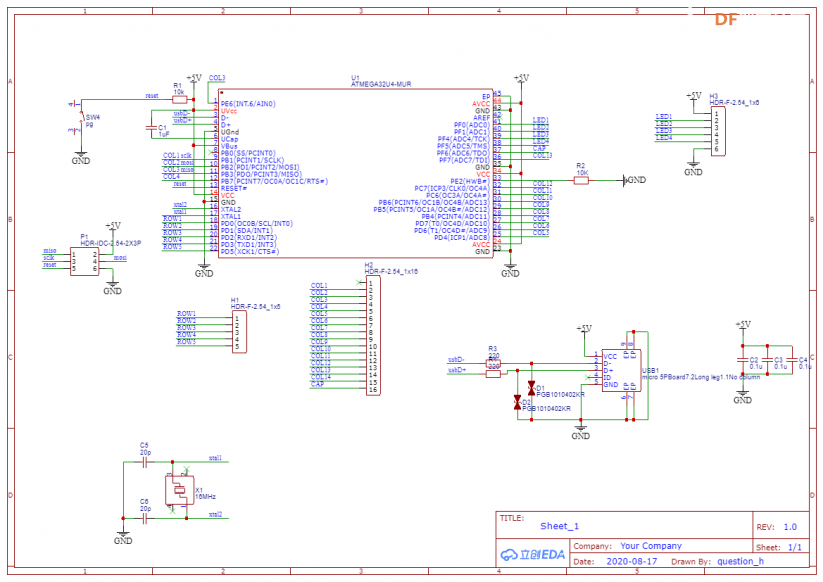

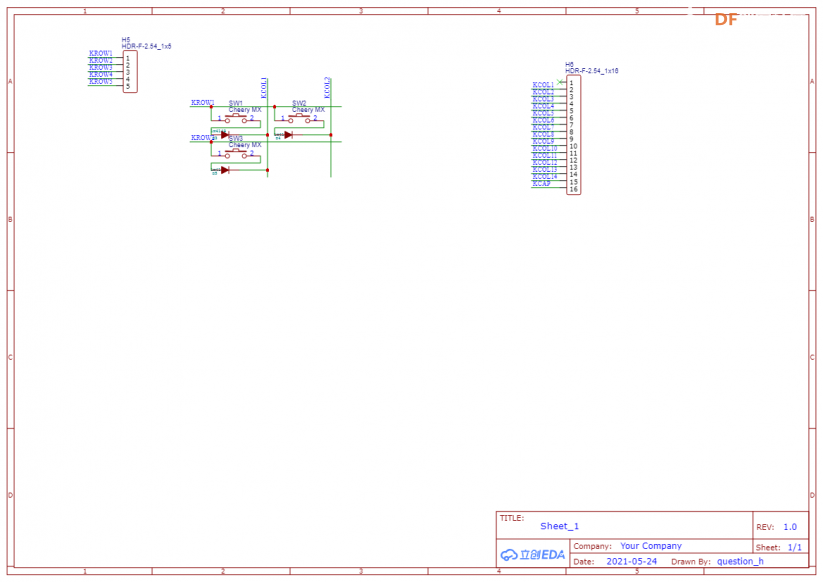
 Gerber_pcb.zip Gerber_pcb.zip
|







 Gerber_pcb.zip
Gerber_pcb.zip 沪公网安备31011502402448
沪公网安备31011502402448